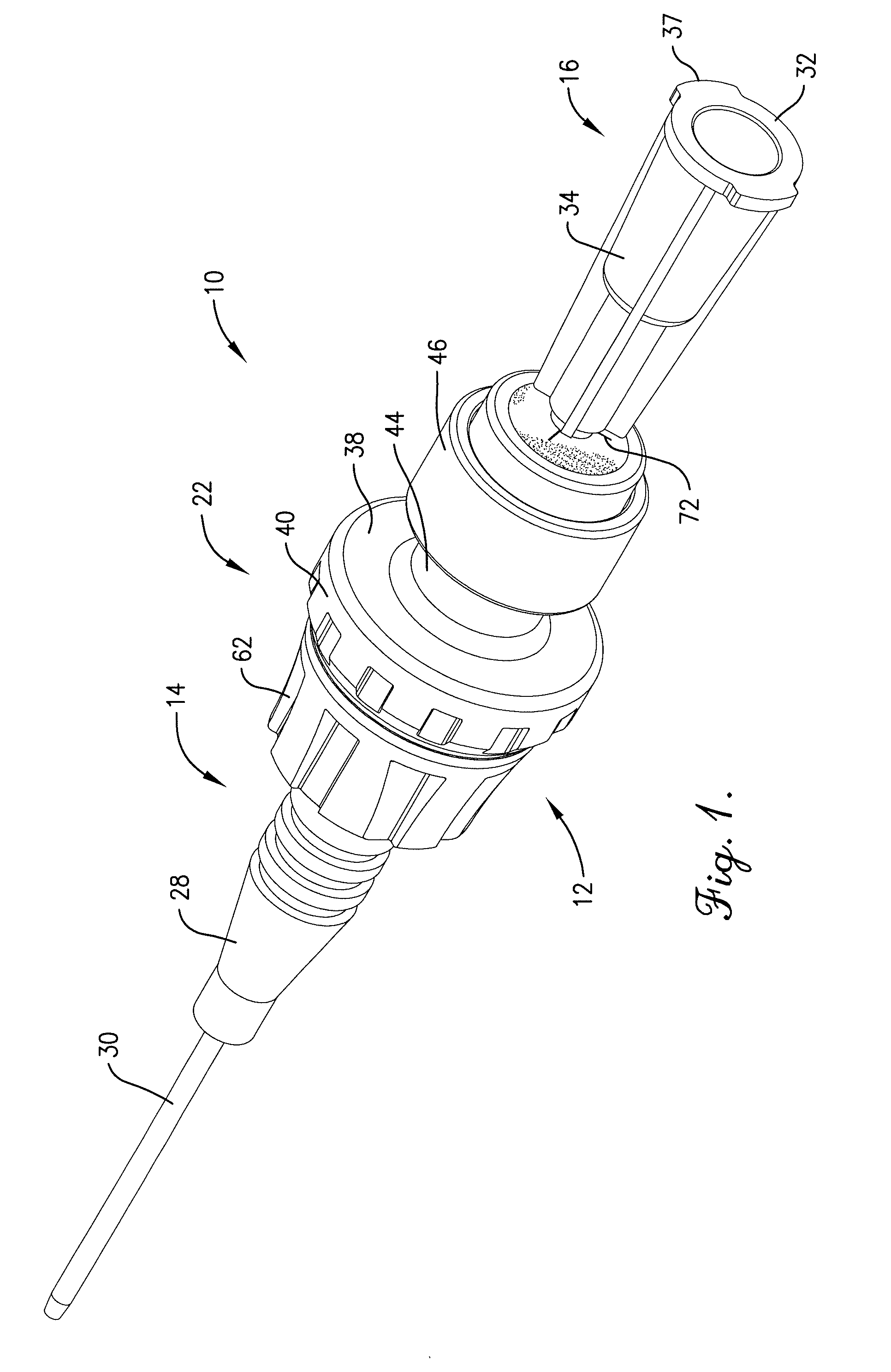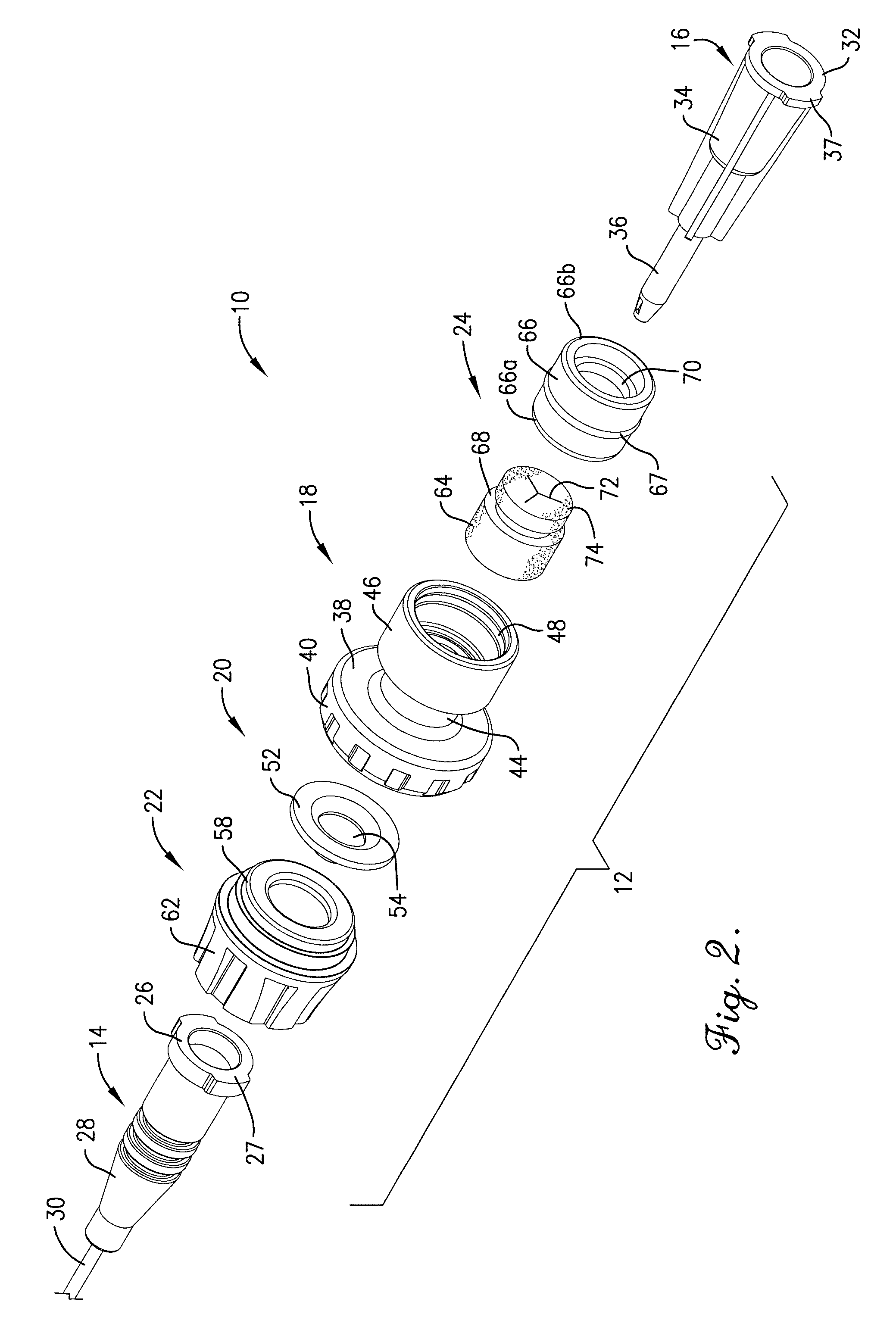Intravenous injection site with split septum and pressure activated flow control valve
a flow control valve and intravenous technology, applied in the field of intravenous injection sites with split septum and pressure activated flow control valves, can solve the problems of blood reflux, occlusion of the apparatus, clotting of the blood and occlusion of the blood, etc., and achieve the effect of eliminating any possibility of blood reflux and safe and effective fluid administration to patients
- Summary
- Abstract
- Description
- Claims
- Application Information
AI Technical Summary
Benefits of technology
Problems solved by technology
Method used
Image
Examples
Embodiment Construction
[0021] Turning now to the drawings, the intravenous catheter assembly 10 selected for illustration generally includes an injection site 12, a peripheral catheter 14 secured to the distal end of the site 12, and a cannula 16 removably inserted into the proximal end of the injection site. The injection site 12 is constructed in accordance with a preferred embodiment of the present invention. Although the injection site 12 is shown with the catheter 14 and cannula 16, it will be appreciated that the site 12 can be used in other applications (e.g., with other types of connection components, tubing, etc.). The injection site 12 preferably includes a support body 18, distal components comprising a unitary pressure-actuated flow control valve 20 and luer lock fitting 22, and a proximal split septum unit 24. As will be apparent with respect to certain aspects of the present invention, the injection site 12 may itself be alternatively configured (e.g., a luer lock fitting may not be required...
PUM
| Property | Measurement | Unit |
|---|---|---|
| convex shape | aaaaa | aaaaa |
| diameter | aaaaa | aaaaa |
| pressure | aaaaa | aaaaa |
Abstract
Description
Claims
Application Information
 Login to View More
Login to View More - R&D
- Intellectual Property
- Life Sciences
- Materials
- Tech Scout
- Unparalleled Data Quality
- Higher Quality Content
- 60% Fewer Hallucinations
Browse by: Latest US Patents, China's latest patents, Technical Efficacy Thesaurus, Application Domain, Technology Topic, Popular Technical Reports.
© 2025 PatSnap. All rights reserved.Legal|Privacy policy|Modern Slavery Act Transparency Statement|Sitemap|About US| Contact US: help@patsnap.com



